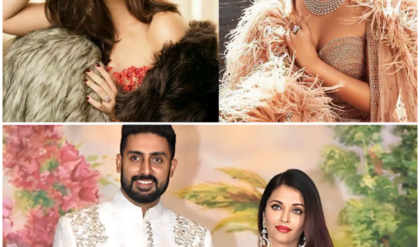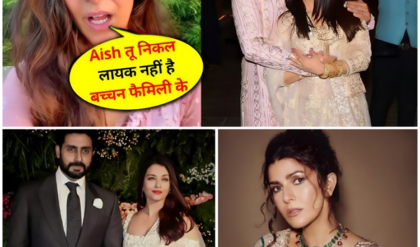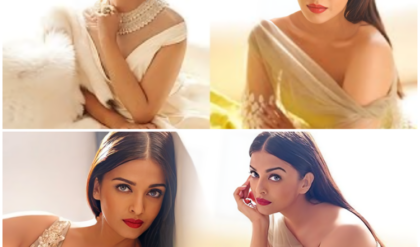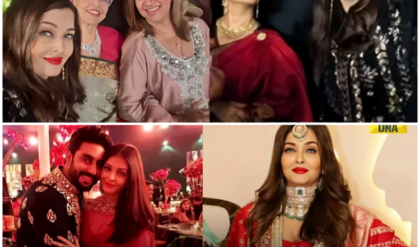What Do Fans Around the World Say About India’s Beauty Queens?
India’s representation at global beauty pageants has been a topic of great pride and fascination for many years. With a rich history of success at competitions like Miss Universe, Miss World, and Miss Earth, India has consistently produced beauty queens who not only embody grace and elegance but also serve as ambassadors of culture, intelligence, and empowerment.
However, the perception of India’s beauty queens is not only shaped by their achievements but also by their representation of India on the world stage—an intricate blend of tradition and modernity that resonates with both Indian and international audiences.
While Indian beauty queens are celebrated for their outward beauty, their performances in interviews, talent rounds, social work, and poise on stage have played a significant role in shaping the international perspective.
From Sushmita Sen’s historic win in 1994 to Harnaaz Sandhu’s recent triumph at Miss Universe 2021, India’s queens have garnered global attention, admiration, and—often—controversy. This article will explore the multifaceted opinions and perceptions that fans around the world have about India’s beauty queens, examining how their cultural significance, achievements, and personal narratives resonate with diverse audiences.
India’s Beauty Queens: A Legacy of Global Success
India’s journey in the world of beauty pageants is one of remarkable success. Over the years, India has produced six Miss World titles (starting with Reita Faria in 1966) and two Miss Universe crowns (first with Sushmita Sen in 1994 and again with Lara Dutta in 2000).
In addition, India has also claimed top spots in Miss Earth, Miss International, and other global competitions. The success of these queens has sparked immense pride in their home country, making India a formidable force in the world of international beauty pageants.
Despite this history of achievement, each Indian beauty queen comes with her own narrative and style, which can either align with or challenge traditional expectations—both within India and globally.
The global fanbase of Indian queens is diverse, with opinions often split between admiration for their traditional values and questioning their adherence to modern standards of beauty.
Admiration for Grace, Elegance, and Cultural Representation
One of the most consistent themes in global discussions about India’s beauty queens is their grace, elegance, and cultural representation. Indian queens often stand out due to their unique and distinct physical features, such as their dark complexions, exotic beauty, and long, luscious hair.
Fans appreciate that Indian queens bring a sense of ethnic diversity and inclusivity to the pageant stage, challenging the traditional Western beauty standards that have historically dominated global competitions.
Their presence on the stage has served to challenge the notion that “beauty” is synonymous with one race or ethnicity, broadening the definition of beauty in the eyes of many fans.
Moreover, Indian queens are often admired for their classical beauty, which is rooted in traditional ideals that have existed for centuries.
From the iconic sari worn by Sushmita Sen at Miss Universe to the elegant traditional attire sported by Aishwarya Rai during her Miss World reign, Indian queens have used their platform to showcase Indian culture with pride.
Their makeup, hairstyles, jewelry, and clothing often reflect their connection to Indian traditions, creating a powerful visual representation of India’s rich cultural heritage.
International fans also appreciate the emphasis that Indian queens place on language fluency, literacy, and intelligence. Queens like Priyanka Chopra (Miss World 2000), Dia Mirza (Miss Asia Pacific 2000), and Harnaaz Sandhu (Miss Universe 2021) have not only excelled in the physical aspects of pageants but have also used their platform to discuss issues like education, mental health, and gender equality.
This combination of beauty and intellect is one of the most lauded aspects of India’s queens, and fans around the world take pride in their ability to represent India with both grace and substance.
India’s Queens: Challenging Beauty Norms
In the face of global beauty standards that have often been criticized for promoting Eurocentric ideals—blonde hair, light skin, and blue eyes—India’s beauty queens have been pivotal in challenging these norms.
The world has watched as dark-skinned queens from India, such as Sushmita Sen, Aishwarya Rai, and Manushi Chhillar, have not only taken top spots in international pageants but have also pushed back against the overwhelming dominance of fair-skinned models.
Fans often view this as a powerful shift in the global beauty industry. By celebrating varied shades of beauty, India’s queens have created a space for women of color to be seen, heard, and appreciated. Indian queens, particularly in the 90s and early 2000s, were often among the first to bring diversity to the stage at Miss World and Miss Universe.
Their influence has helped inspire other contestants from diverse backgrounds, especially women of South Asian, Black, and Middle Eastern descent, to believe that they, too, can rise to the top of the beauty pageant world.
In the West, particularly in America and Europe, Indian beauty queens have gained a reputation for redefining beauty standards and proving that beauty is multifaceted and transcends borders.
This cultural shift is most evident in the ongoing global conversation about colorism, and Indian queens continue to play an integral role in driving that conversation forward.
Pageant Performances: What Fans Love and What They Critique
While Indian queens are admired for their beauty and cultural representation, their performances in the pageant itself often garner mixed reviews from fans. India’s queens are often seen as strong competitors, but not always as frontrunners in the overall competition.
For example, Aishwarya Rai’s legendary performance at Miss World 1994 remains one of the most iconic in the pageant’s history, and she is often praised for her poised demeanor and articulate speech.
Similarly, Sushmita Sen’s victory at Miss Universe was lauded for her intelligence and charisma, which captivated both the judges and audiences worldwide.
Her spontaneous answer to the question about world peace during the final Q&A was seen as a defining moment in pageant history.
However, Indian queens are sometimes criticized for not always meeting the higher standards of competition in other areas. Some fans argue that, while Indian queens are often well-prepared in areas such as fashion, social work, and general demeanor, they may sometimes falter when it comes to the physical segments of the competition—particularly the swimsuit round.
In some cases, critics have said that India’s representatives, while beautiful, may not always project the same level of confidence or stage presence as other contestants.
The growing trend of focusing on fitness and aesthetic appeal in international beauty competitions has led some fans to question whether India’s queens are equipped to keep up with these shifting expectations.
While traditional beauty and elegance are celebrated, there is an increasing demand for pageant queens to have the complete package—athleticism, swimwear confidence, and catwalk mastery.
Harnaaz Sandhu and the 2021 Miss Universe Victory: A New Era for Indian Beauty Queens
The 2021 Miss Universe win of Harnaaz Sandhu marked a new chapter for India’s legacy in beauty pageants, and the global reaction to her win was a defining moment for Indian fans.
Harnaaz’s victory was not only celebrated for its historical significance—it was also widely seen as a shift in the narrative surrounding beauty queens.
She wasn’t just a stunning face; she represented the modern, empowered woman who embraces her natural beauty and mental health advocacy.
Harnaaz’s win was a victory for the body-positive movement, and many fans praised her for addressing the pressure of perfection in the beauty industry.
Her message about accepting oneself and mental well-being resonated strongly with audiences worldwide, especially in the wake of the COVID-19 pandemic. In her interviews and social media, Harnaaz became a beacon of hope for those struggling with body image issues, as well as for young girls aspiring to follow in her footsteps.
While Harnaaz’s triumph was widely supported by fans, it also brought a new wave of discussion about the evolving criteria for pageant queens.
Her success highlighted that intellect, authenticity, and activism could coexist with the traditional beauty standards. Harnaaz became a role model for millions of young women who felt that pageants no longer needed to be just about physical attributes.
Fans from all corners of the world lauded her confidence, intelligence, and natural charm. However, some detractors felt that her victory was a break from the traditional idea of beauty queens, where more emphasis was placed on a polished, near-perfect appearance.
While many celebrated her as the new face of Miss Universe, others debated whether her win was a sign of a broader shift in the beauty pageant industry toward a more inclusive and diverse representation.
India’s Beauty Queens and Their Global Influence
Beyond pageants, India’s beauty queens often become cultural ambassadors and influencers in their own right. Once crowned, they have access to global platforms, where they advocate for social causes, engage in philanthropic work, and become key figures in fashion, film, and activism.
Aishwarya Rai, for example, went on to become one of the most recognized actresses in the world, while Priyanka Chopra used her Miss World platform as a stepping stone to launch a successful Hollywood career, further elevating India’s influence on the global stage.
Moreover, beauty queens from India often become part of the global conversation on issues like gender equality, education, and poverty alleviation. Fans from different parts of the world appreciate how these women use their platforms for social good, reflecting a growing demand for beauty queens to be role models who champion social justice and humanitarian causes.
In this respect, India’s queens often occupy a unique space in international pageant history as both beautiful women and impactful changemakers.
Conclusion: The Multifaceted Image of India’s Beauty Queens
India’s beauty queens continue to be the subject of both admiration and critique, embodying the complex and evolving ideals of beauty, intelligence, and power.
Fans around the world appreciate the grace, elegance, and cultural pride that India’s queens bring to the stage, but they also critique certain aspects of their performance or appearance in comparison to international standards.
Regardless of the debates, it is clear that India’s beauty queens have had—and will continue to have—a significant impact on global beauty culture.
India’s beauty queens represent far more than just physical beauty. They symbolize a fusion of tradition and modernity, elegance and strength, and individuality and representation. As global fans continue to support and challenge their queens, the impact of these women will echo far beyond the stage of Miss Universe or Miss World, leaving a lasting legacy of empowerment for generations to come.
News
Scandalous! Celebrity Caught in a Shocking Incident with a Fan in Public!”
Shocking Incident Involving Kareena Kapoor: A Fan Misbehaves in Front of the Media In a deeply unsettling incident, Bollywood actress Kareena Kapoor Khan found herself at the center of an unexpected and distressing situation when a fan reportedly touched her…
End of content
No more pages to load






